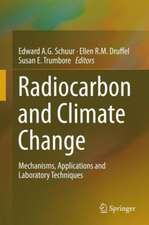Chitin: Formation and Diagenesis: Topics in Geobiology, cartea 34
Editat de Neal S. Guptaen Limba Engleză Paperback – 27 ian 2013
| Toate formatele și edițiile | Preț | Express |
|---|---|---|
| Paperback (1) | 551.57 lei 38-44 zile | |
| SPRINGER NETHERLANDS – 27 ian 2013 | 551.57 lei 38-44 zile | |
| Hardback (1) | 641.20 lei 6-8 săpt. | |
| SPRINGER NETHERLANDS – 4 dec 2010 | 641.20 lei 6-8 săpt. |
Din seria Topics in Geobiology
- 18%
 Preț: 1858.10 lei
Preț: 1858.10 lei - 20%
 Preț: 822.09 lei
Preț: 822.09 lei - 15%
 Preț: 672.43 lei
Preț: 672.43 lei - 18%
 Preț: 1236.82 lei
Preț: 1236.82 lei - 15%
 Preț: 647.59 lei
Preț: 647.59 lei - 24%
 Preț: 885.06 lei
Preț: 885.06 lei - 18%
 Preț: 951.59 lei
Preț: 951.59 lei - 18%
 Preț: 964.23 lei
Preț: 964.23 lei - 18%
 Preț: 1117.69 lei
Preț: 1117.69 lei - 15%
 Preț: 633.31 lei
Preț: 633.31 lei - 18%
 Preț: 966.27 lei
Preț: 966.27 lei - 18%
 Preț: 952.54 lei
Preț: 952.54 lei - 18%
 Preț: 949.85 lei
Preț: 949.85 lei - 18%
 Preț: 1013.50 lei
Preț: 1013.50 lei - 24%
 Preț: 821.19 lei
Preț: 821.19 lei - 18%
 Preț: 952.40 lei
Preț: 952.40 lei - 18%
 Preț: 961.23 lei
Preț: 961.23 lei - 18%
 Preț: 952.26 lei
Preț: 952.26 lei - 18%
 Preț: 960.42 lei
Preț: 960.42 lei - 18%
 Preț: 1843.11 lei
Preț: 1843.11 lei - 18%
 Preț: 954.31 lei
Preț: 954.31 lei - 18%
 Preț: 1256.41 lei
Preț: 1256.41 lei - 18%
 Preț: 959.50 lei
Preț: 959.50 lei - 15%
 Preț: 673.60 lei
Preț: 673.60 lei - 18%
 Preț: 954.14 lei
Preț: 954.14 lei - 15%
 Preț: 640.06 lei
Preț: 640.06 lei - 18%
 Preț: 959.36 lei
Preț: 959.36 lei
Preț: 551.57 lei
Preț vechi: 689.46 lei
-20% Nou
Puncte Express: 827
Preț estimativ în valută:
105.54€ • 110.20$ • 87.15£
105.54€ • 110.20$ • 87.15£
Carte tipărită la comandă
Livrare economică 11-17 aprilie
Preluare comenzi: 021 569.72.76
Specificații
ISBN-13: 9789400734487
ISBN-10: 9400734484
Pagini: 188
Ilustrații: XII, 176 p.
Dimensiuni: 155 x 235 x 10 mm
Greutate: 0.27 kg
Ediția:2011
Editura: SPRINGER NETHERLANDS
Colecția Springer
Seria Topics in Geobiology
Locul publicării:Dordrecht, Netherlands
ISBN-10: 9400734484
Pagini: 188
Ilustrații: XII, 176 p.
Dimensiuni: 155 x 235 x 10 mm
Greutate: 0.27 kg
Ediția:2011
Editura: SPRINGER NETHERLANDS
Colecția Springer
Seria Topics in Geobiology
Locul publicării:Dordrecht, Netherlands
Public țintă
Professional/practitionerCuprins
1. Chitin nanostructures in living organisms.-2. Chitin in the exoskeletons of Arthropoda: From ancient design to novel materials science.- 3. Radiocarbon Dating of Chitin.- 4. Carbon, nitrogen and oxygen stable isotope ratios in chitin.- 5. Hydrogen Isotopes in Beetle Chitin.- 6. Identification and characterization of chitin in organisms.- 7. Fate of chitinous organisms in the geosphere.- 8. Transformation of chitinous tissues in elevated Presssure-Temperature conditions: additional insights from experiments on plant tissues.
Notă biografică
I studied Geology (Honours) at the University of Delhi (1998-2001) and moved to the University of Bristol to start a PhD in Geobiology and Organic Geochemsitry with Professor Derek Briggs, FRS and Dr. Richard D. Pancost. During my PhD I worked on the biomolecular transformation of organisms such as arthropods and leaves and the geochemistry of plant and arthropod fossils in an attempt to understand the fate of biopolymers such as chitin, lignin, cutin and proteins in modern organisms and their contribution to sedimentary organic matter. We conducted experimental heating experiments in the lab of Dr. Raymond Michels (CNRS-CREGU, Nancy, France) with modern organisms and their biopolymeric contituents to replicate the process in the laboratory. We were able to challenge the prevelant selective preservation model of organic matter preservation and propose the lipids present in organisms polymerise to form recalcitrant aliphatic components that preserve in sediments. Following completion of my PhD in 2005 I moved to Yale University as a Postdoc Associate and worked with Prof Derek Briggs on experimental organic taphonomy to replicate fossilisation processes in low temperature conditions to understand the lipid polymerisation process. We further explored the fate of proteinaceous organisms such as hemichordates in the geologic record and the organic chemistry of Eurypterids, amongst the largest arthopods that existed. After this I moved to MIT in 2007 in the lab of Professor Roger Summons, FRS and worked on the molecular transformation of cephalopods, the fate of plant biopolymers using Metasequoia as a model and the effect of heat on the stereochemistry of lipid organic molecules. In 2009 I moved to the Geophysical Laboratory, Carnegie Institution as a NASA Astrobiology Postdoctoral Fellow to conduct experimental work with Dr. George Cody. We conducted Scanning Transmission X-Ray microscopy-NEXAFS spectroscopy experiments at the Berkeley Lab, Berkeley, California on fossil scorpions 400 million years old and detected chitin in them to report the oldest known evidence of such biopolymers in the geologic record. I further conducted heating experiments on Cyanobacteria to understand the fossilisation potential of microbes and their contribution to sedimentary organic matter.
Textul de pe ultima copertă
There are several books on properties of chitin and associated biomolecules and their biochemical significance. However, the present volume deals with a wide variety of biogeochemical and organic geochemical aspects of this vital macromolecule written by leading authors and experts in the field. Each chapter is carefully peer reviewed and is an updated account of recent research in isotopic, nanostructural, biochemical, microstructural, geochemical, paleontological and experimental aspects of chitin formation, distribution and preservation in the environment and earth history.
Caracteristici
First volume on chitin formation, distribution and preservation in the environment and earth history Featuring experimental, analytical, mass spectrometric, spectroscopic, enzymatic and microscopic methods Benefits biogeochemists, geochemists and paleontologists

















